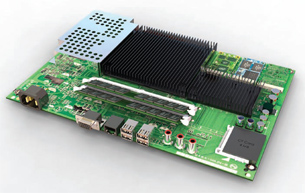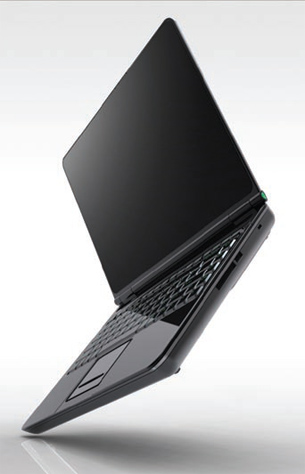Latest News
November 1, 2008
By Bob Cramblitt
Pages 1 | 2 »
 This HyperShot image, a digital rendering and not a photo, was part of a series of design studies by Peter Kossev of Pixel Mathematics. (Image courtesy of Pixel Mathematics) |
There’s a home truth about industrial designers that 3D software vendors have never quite seemed to grasp: designers want to design, not model and render.
It’s been more than 20 years since the advent of 3D computer graphics software for the desktop. A lot of progress has been made, especially in realism: Beyond the early days of flat chrome-like surfaces, designers now have access to almost any texture they desire — hair, tile, pebbled glass, ribbed plastic, leather, foam. You name it, it can be replicated. And lighting capabilities have become so nuanced to be practically indistinguishable from reality thanks to techniques such as ray tracing, radiosity, and global illumination.
Complementing software developments are ongoing leaps in graphics performance made possible by multicore processors, 64-bit computing, and increasingly powerful graphics boards that incorporate capabilities such as virtual buffer objects (VBOs) and full-scene anti-aliasing.
The Way Industrial Designers Work
It seems petty to complain about something that’s gotten progressively better, faster, and cheaper, but up until recently, a central quality has been missing from 3D graphics software: It doesn’t quite work the way an industrial designer wants it to work. Specifically:
- The software is written from a graphics developer’s standpoint, not an industrial designer’s.
- Building a model, then rendering it photorealistically almost always requires translation that leads to loss of important design details.
- Getting the right lighting, materials, shadowing, and reflections still takes a lot of expertise in the rendering software.
- Even with all the hardware progress, it can take 10 hours or more to create a photorealistic image.
- Often what is rendered in “preview” mode doesn’t match up well with the final rendering.
 This is a laptop design study from Design Edge rendered in HyperShot. (Image courtesy of Design Edge) |
So, despite all the progress and mutual need, the relationship between industrial designers and 3D graphics software has been an uneasy one. The software is a common tool, but unlike a favorite pencil or your new iMac, it is far from loved.
“We need to have great images to clearly communicate our ideas, dreams, and imagination,” says Gray Holland of Alchemy Labs, a design consultancy located in San Francisco with customers like Disney, Seiko, Procter & Gamble, and Nike. “But we’re in the activity of design, not imagery.” Holland echoes the attitude of most industrial designers today.
A Really Good Wrench
Holland’s desire for a simple tool that will do a high-quality job without fuss might have been answered. Along with industrial designers at firms such as Stuart Karten Design, Design Edge, Smart Design, and Pixel Mathematics, Holland has migrated to a new tool that the converts say delivers on much of the misplaced promise of 3D graphics for industrial design. The software is called HyperShot from Bunkspeed of Los Angeles, CA.
“In many ways it is the perfect tool for our field,” says Matt Grossman of Design Edge. “Other 3D software has failed in this area because it literally does too much, is therefore expensive, and has a huge learning curve. It’s nice to know your software was used to create animated Hollywood-style CG ]computer-generated] cinematic effects, but it’s like someone handing you the key to a fully stocked tool shed when all you need is a wrench.
“HyperShot doesn’t do every conceivable thing, with checkboxes for every imaginable option,” Grossman says, “but it does what we want, and it does it near perfect every time. In that way, HyperShot is a really good wrench. Perhaps most importantly, its rendering speed has given us much more time for design, which is the business we’re in.”
At Design Edge — whose clients include Dell, Motorola, AMD, and S.C. Johnson — HyperShot has turned a tedious task into one that supports the creative process.
Pages 1 | 2 »
Subscribe to our FREE magazine, FREE email newsletters or both!
Latest News
About the Author
DE’s editors contribute news and new product announcements to Digital Engineering.
Press releases may be sent to them via [email protected].






